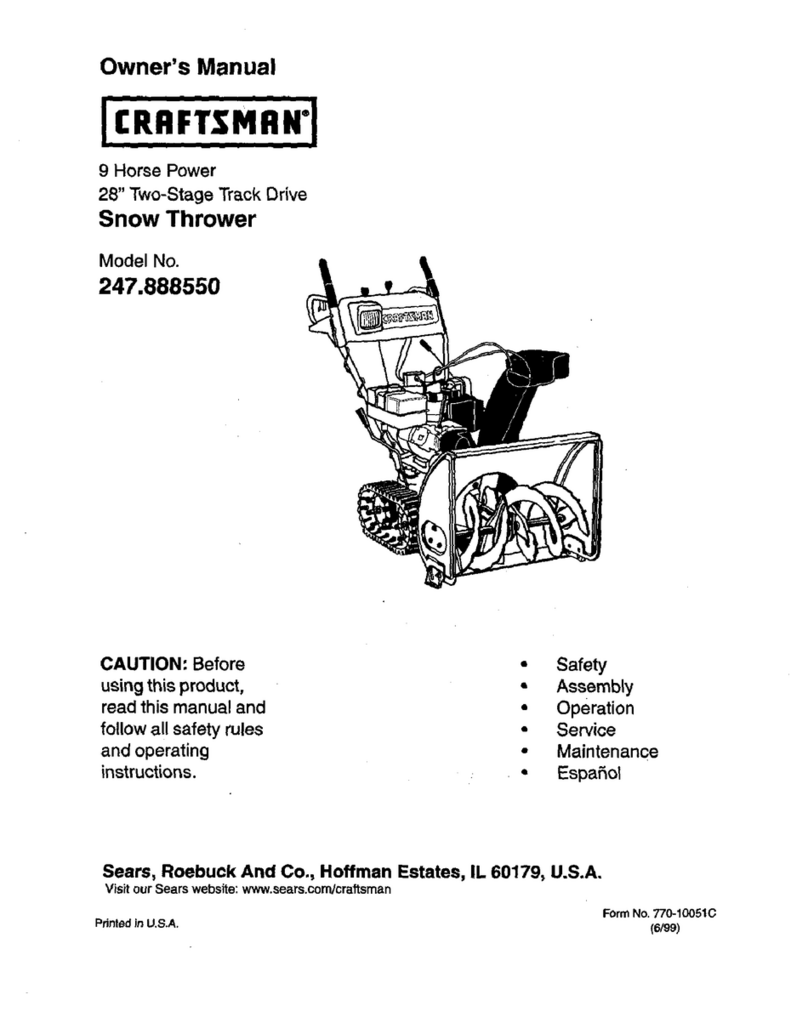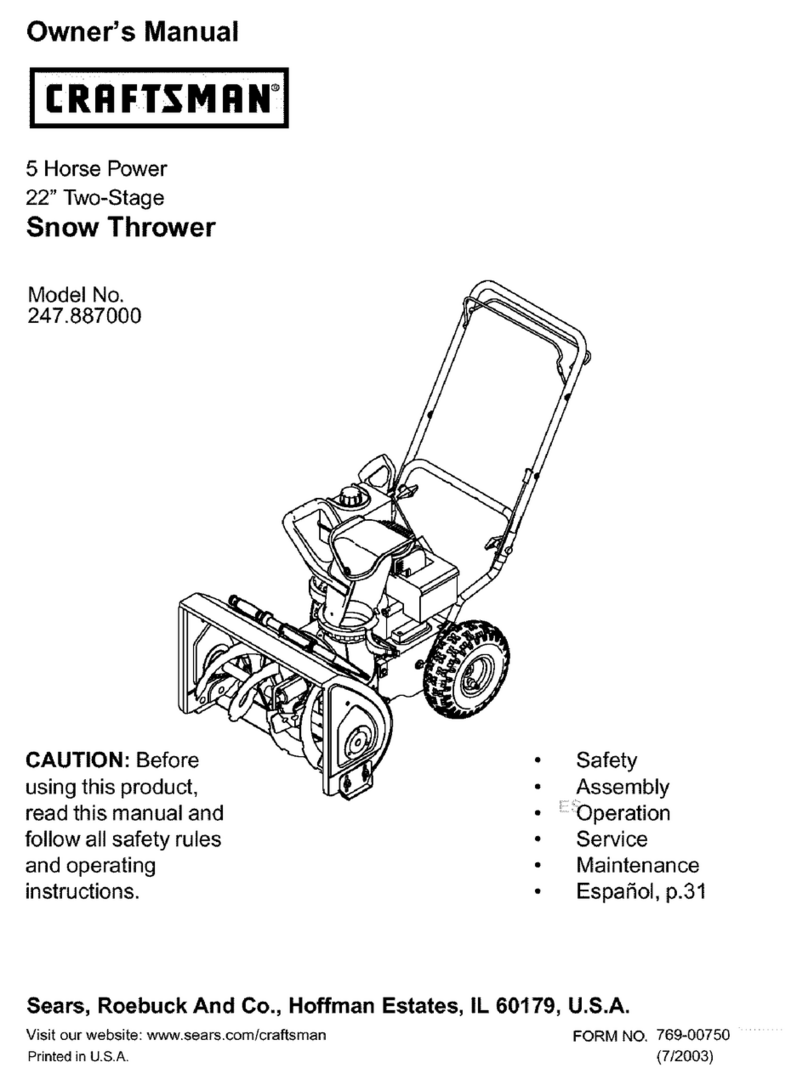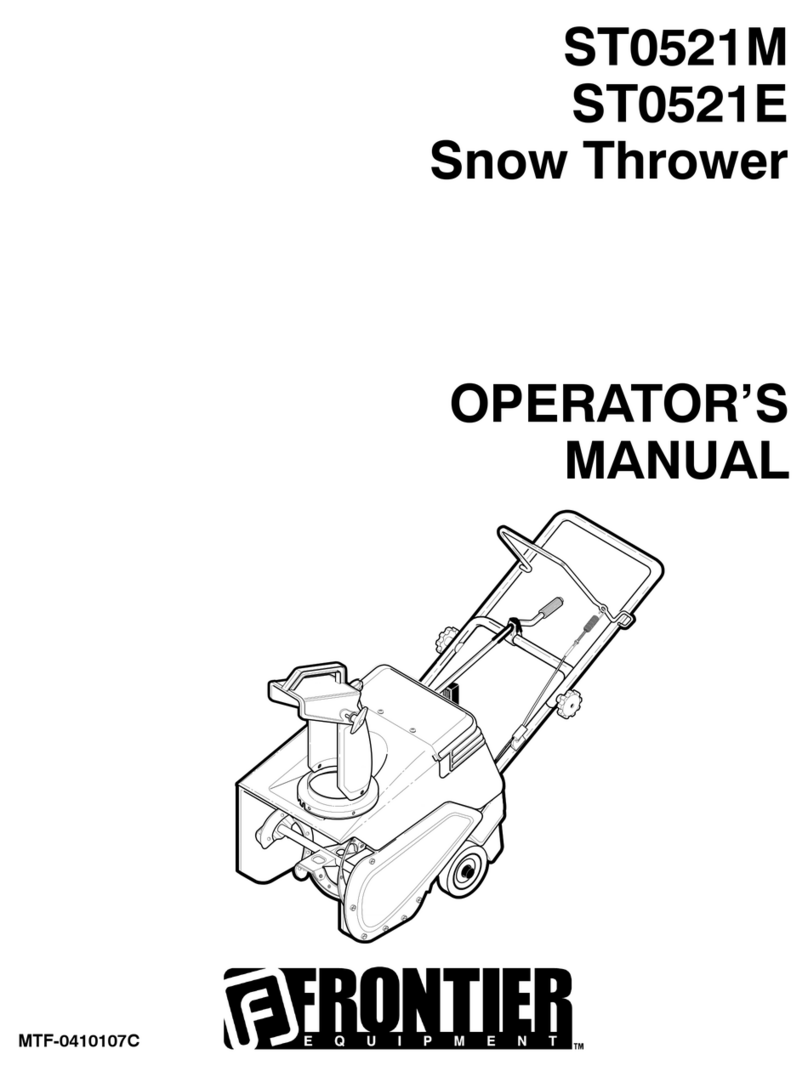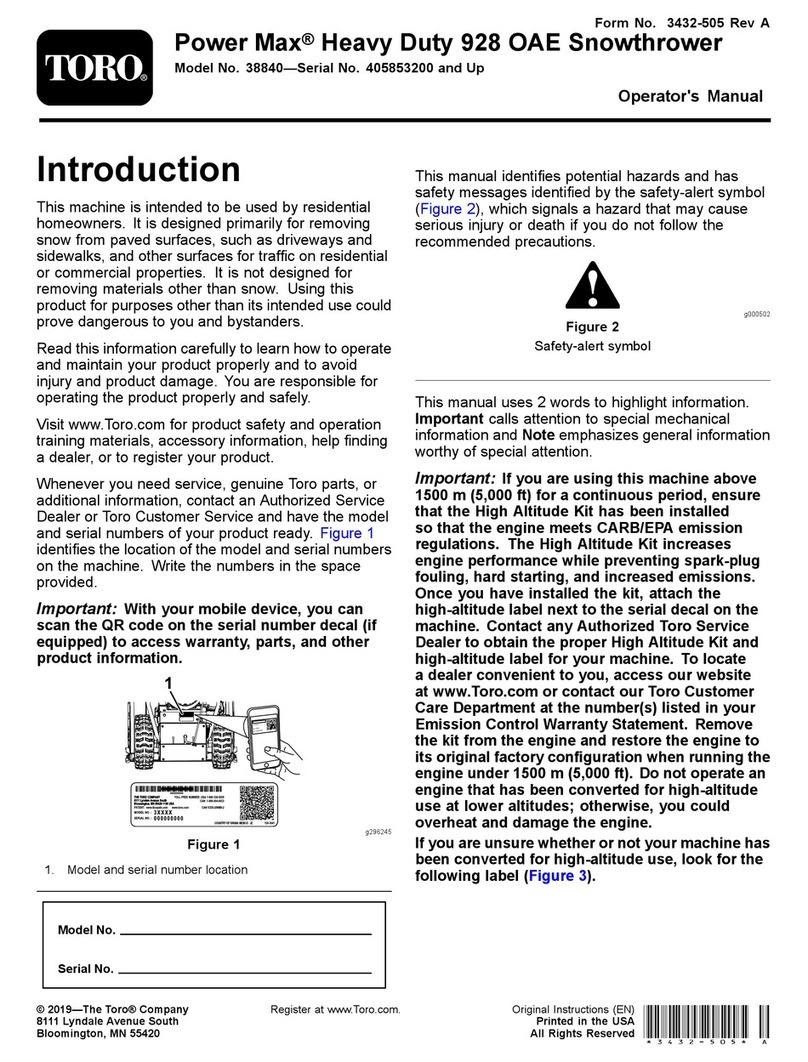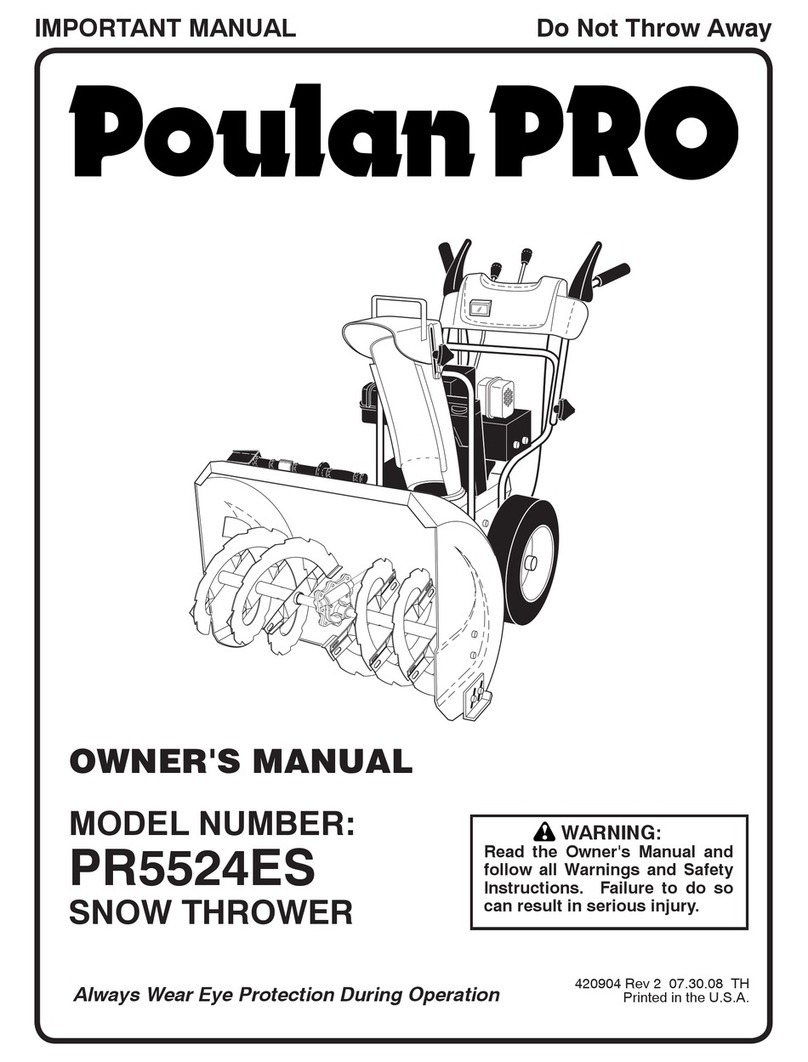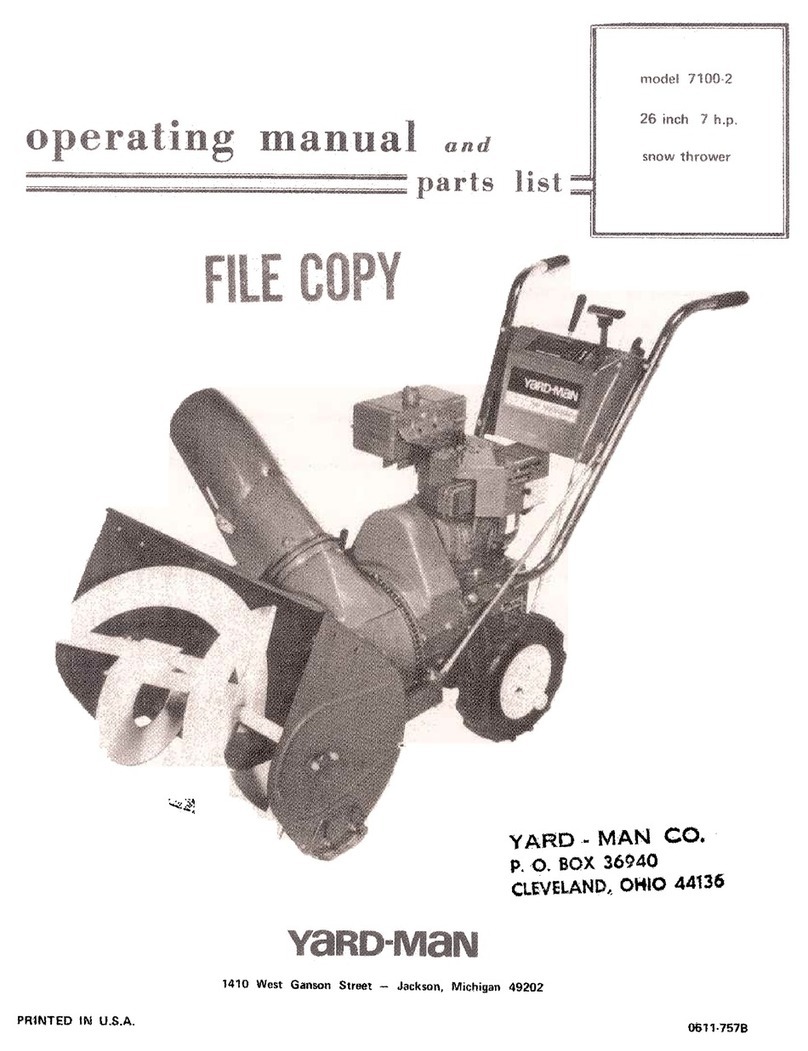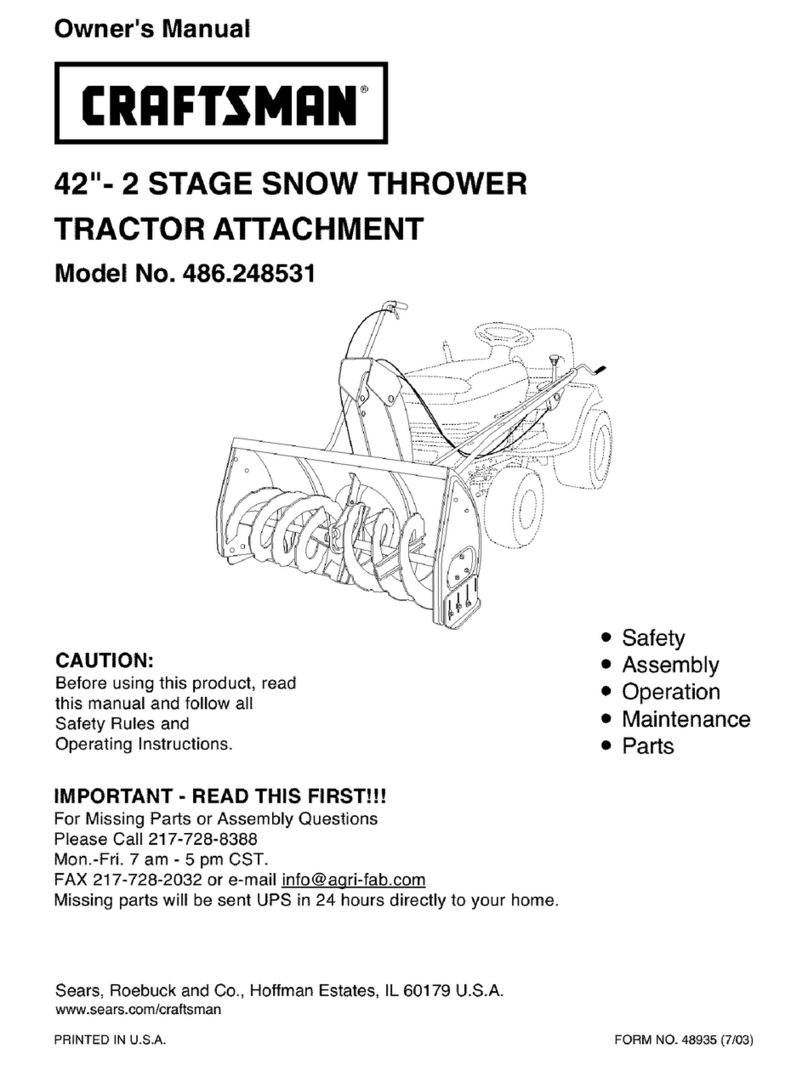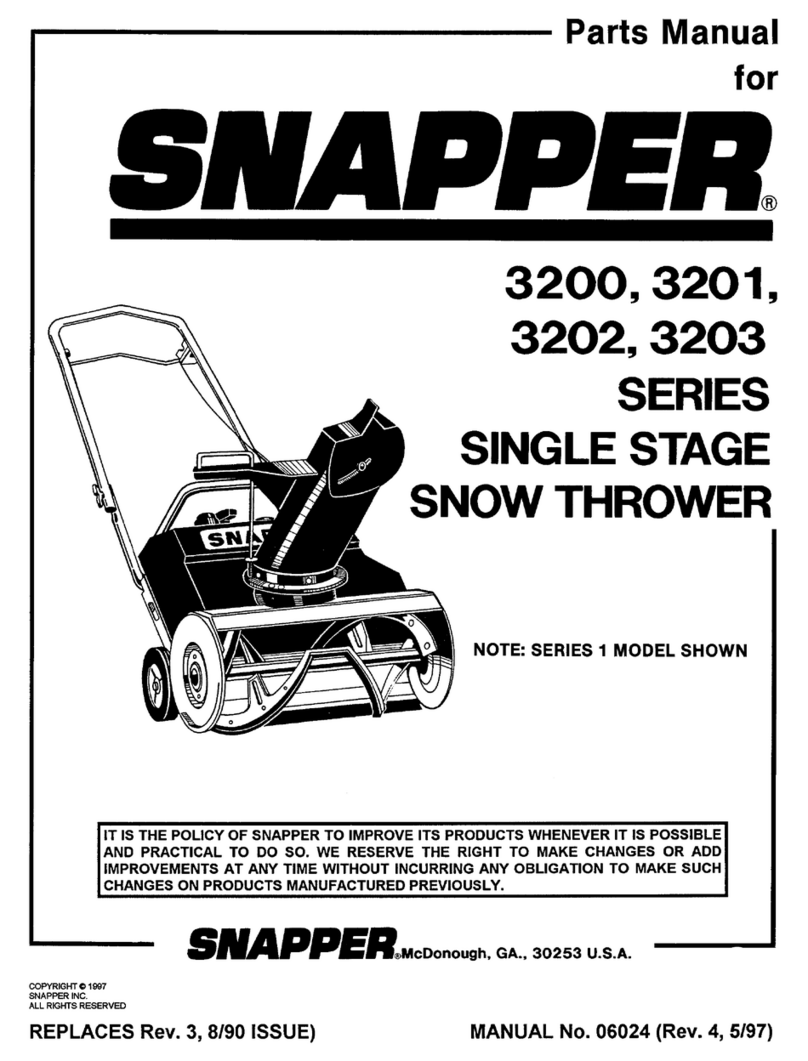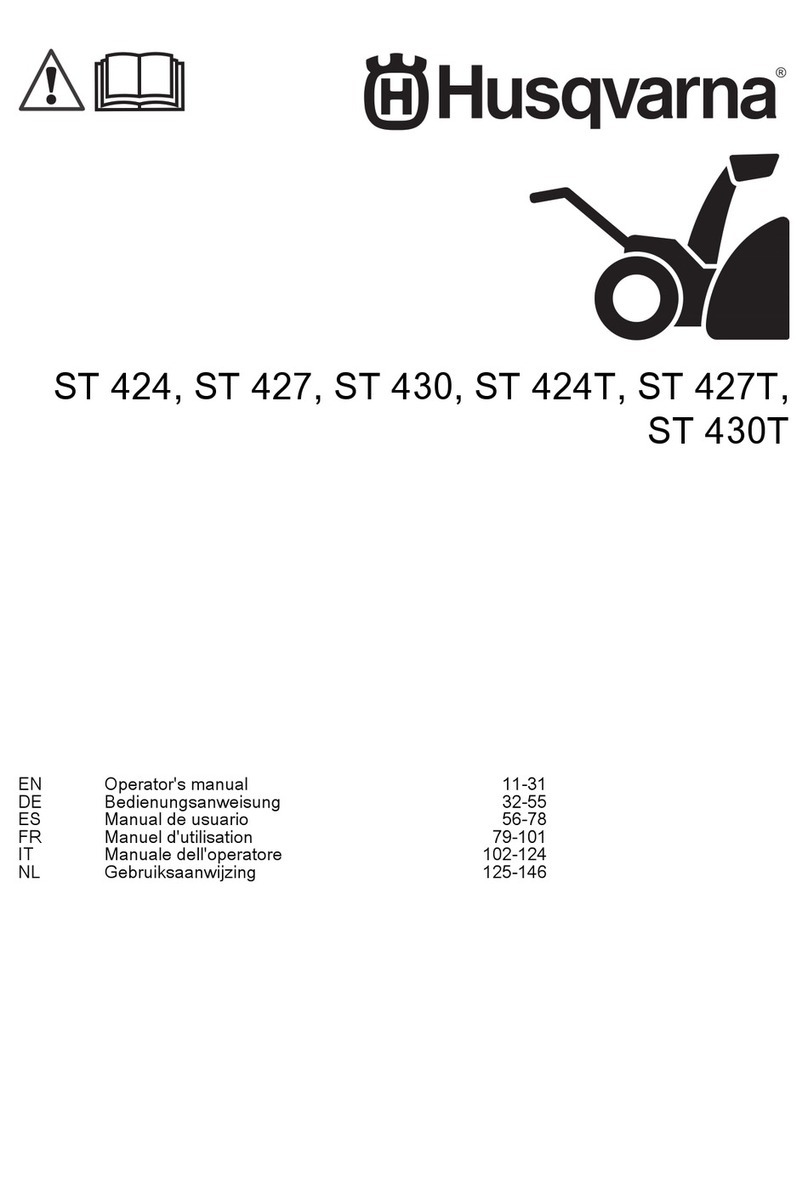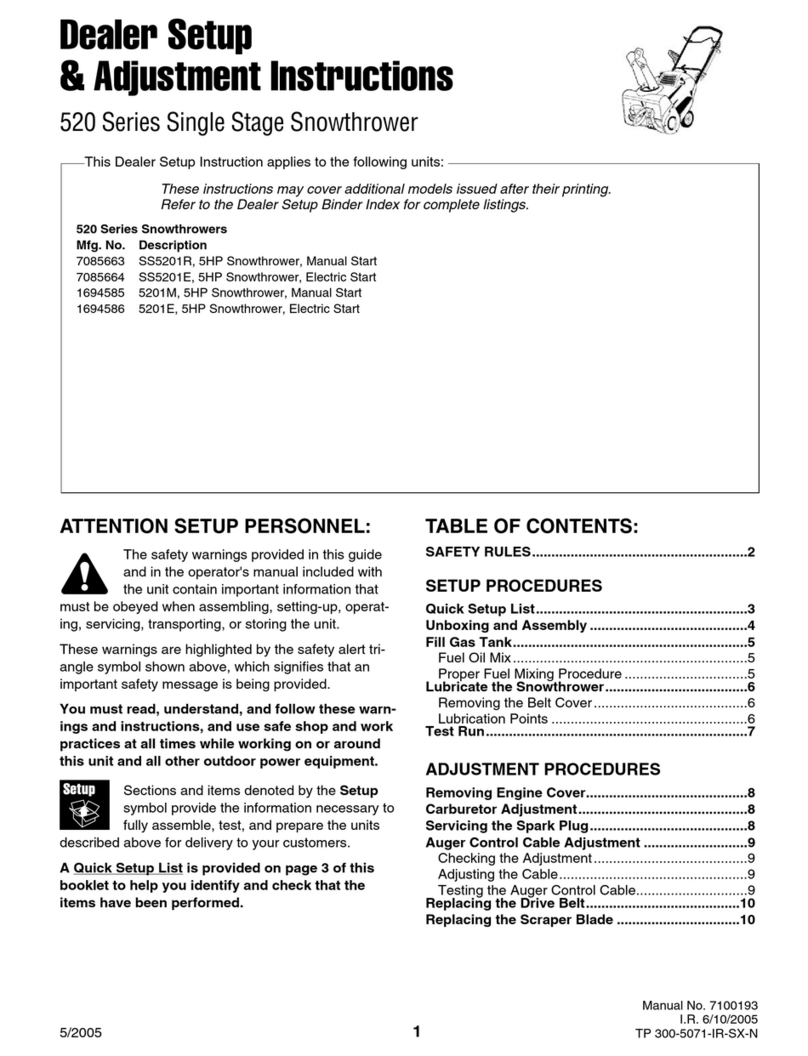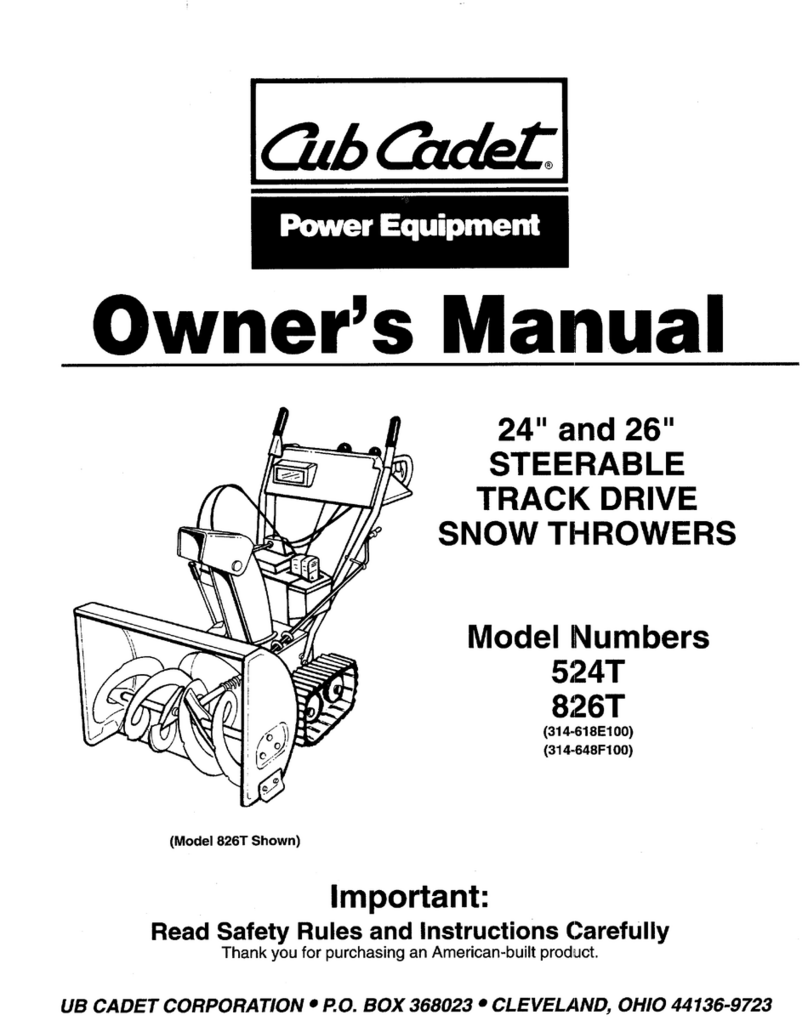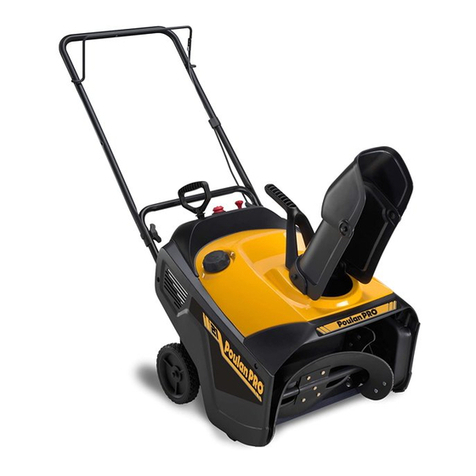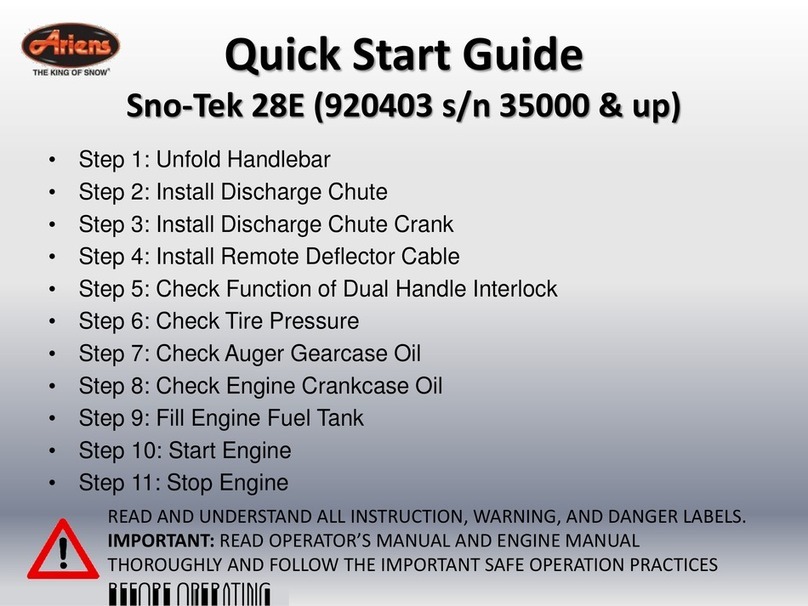P3 International GSE3226STG Instruction manual

Model / Modèle: GSE3226STG / GSE5230STG
SAVE THIS MANUAL
You will need this manual for safety instructions, operating procedures, and warranty.
Put it and the original sales invoice in a safe, dry place for future reference.
CONSERVEZ CE GUIDE
Vous aurez besoin de ce guide pour les instructions de sécurité, les procédures d’utilisation et la garantie.
Conservez-le dans un endroit sûr et sec pour référence future.
QUESTIONS? 1-877-270-7772
Our Customer Service staff are ready to provide
assistance. If a part is damaged or missing, replacement
parts can be shipped from our facility.
For immediate help with assembly, or for additional
product information, call our toll-free
number: 1-877-270-7772. C
Notre personnel du service à la clientèle sera prêt à
fournir assistance. Si une pièce est endommagée ou
manquante, des remplacements seront expédiés de notre
usine.
Pour de l’aide immédiate avec l’assemblage, ou pour des
informations additionnelles sur le produit, appeller notre
numéro sans frais nord-américain : 1 (877) 840-0840.C
Gas Snowthrowers
General Instruction Manual
Souffleuse à essence
Manuel d’instruction général
*Products may differ slightly from those pictured *Les produits l'emballage peuvent différer

2
ENGLISH
TABLE OF CONTENTS
Important Safe Operating Practices.............................................................. p.2
Assembly Instructions................................................................................... p.5
Specifications................................................................................................ p.8
Functional Description................................................................................... p.8
Operating Procedures................................................................................... p.10
Adjustment.................................................................................................... p.14
Maintenance..................................................................................................p.16
Servicing........................................................................................................p.17
Warranty........................................................................................................p.18
Troubleshooting.............................................................................................p.19
Parts List.......................................................................................................p.20
Schematic Drawings...................................................................................... p.23
IMPORTANT: Read safety rules and instructions carefully before operating this
equipment.
WARNING: This unit is equipped with an internal combustion engine and should
not be used on or near any unimproved forest-covered, brush-covered or grass-
covered ground unless the engine’s exhaust system is equipped with a spark
arrester meeting applicable local or state laws (if any). If a spark arrester is used,
it should be maintained in effective working order by operator.
WARNING: This symbol points out important safety instructions which, if not
followed could endanger the personal safety and /or property and others.
Read and follow all instructions in this manual before attempting to operate this
machine. Failure to comply with these instructions may result in personal injury
When you see this symbol—heed its warning.
WARNING: Engine Exhaust. Some of its constituents, and certain machine
components contain or emit chemicals that may cause cancer, birth defects,
other reproductive harm.
DANGER: This machine was built to be operated according to the rules for safe
operation in this manual. As with any type of power equipment, carelessness
or error on the part of the operator can result in serious injury .This machine
is capable of amputating hands and feet and of throwing objects. Failure to
observe the following safety instructions could result in serious injury or death .
To use this tool properly, you must observe the safety regulations, the assembly
instructions and the operating instructions to be found in this manual. All persons
who use and service the machine must be informed about its potential hazards
and must be acquainted with this manual. Children should be supervised at all
times if they are in the area in which the tool is being used. It is also imperative that
you observe the accident prevention regulations in force in your area. The same
applies for general rules of occupational health and safety.
WARNING: When using gasoline powered equipment, basic safety precautions,
including the following, should always be followed to reduce the risk of serious
personal injury and/or damage to the unit. Read all these warnings and
instructions before operating this product. Save this Instruction Manual for
future reference.
1. Read, understand and follow all instructions on the machine and in the
manual(s) before attempting to assemble and operate. Keep this manual in a
safe place for future and regular reference and for ordering replacement parts.
2. Be familiar with all controls and their proper operation. Know how to stop the
machine and disengage them quickly.
IMPORTANT SAFE OPERATING PRACTICES
!
!
!
!
!
!

3
ENGLISH
IMPORTANT SAFE OPERATING PRACTICES
3. Never allow children under 14 years of age to operate this machine. Children
14 years old and over should read and understand the operating instructions
and safety rules in this manual and should be trained and supervised by a
parent.
4. Never allow anyone to operate this machine without proper instruction.
5. Thrown objects can cause serious personal injury. Plan your snow-throwing
pattern to avoid discharge of material toward roads, bystanders and the like.
6. Keep bystanders, helpers, pets and children at least 25 metres (75 feet) from
the machine while it is in operation. Stop machine if anyone enters the area .
7. Exercise caution to avoid slipping or falling, especially when operating in
reverse.
PREPARATION
1. Thoroughly inspect the area where the equipment is to be used. Remove all
foreign objects such as doormats, newspapers, sleds, boards, wires, and other
items, which could be tripped over or thrown by the auger/impeller.
2. Always wear safety glasses or eye shields to protect your eyes during
operation and while performing adjustments or repairs. Thrown objects which
ricochet can cause serious injury to the eyes.
3. Do not operate without wearing adequate winter outer garments. Do not wear
jewelery, long scarves or other loose clothing which could become entangled in
moving parts. Wear footwear which will improve footing on slippery surfaces.
4. Use a grounded three-wire extension cord and receptacle for all units with
electric-start engines.
5. Adjust the collector housing height to clear gravel or crushed rock surfaces.
6. Disengage all clutch levers before starting the engine.
7. Never attempt to make any adjustments while engine is running, except where
specifically recommended in the operator’s manual(s).
8. Allow the engine and machine to adjust to outdoor temperature before starting
to clear snow.
9. To avoid personal injury or property damage, use extreme care in handing
gasoline. Gasoline is extremely flammable and the vapors are explosive.
Serious personal injury can occur, when gasoline is spilled on yourself or your
clothes, which can ignite. Wash your skin and change clothes immediately.
a. Use only an approved gasoline container.
b. Extinguish all cigarettes, cigars, pipes and other sources of ignition.
c. Never fuel the machine indoors.
d. Never remove gas cap or add fuel while the engine is hot or running.
e. Allow engine to cool at least two minutes before refueling.
f. Never over-fill the fuel tank. Fill tank to no higher than 1.25 cm (1/2 inch)
below bottom of filler neck to provide space for fuel expansion.
g. Replace gasoline cap and tighten securely.
h. If gasoline is spilled, wipe it off the engine and equipment. Move machine
to another area. Wait 5 minutes before starting the engine.
i. Never store the machine or fuel container inside where there is open
flame, spark, or pilot light (e.g. furnace, water, heater, space heater,
clothes dryer, etc.)
j. Allow machine to cool at least 5 minutes before storing.
OPERATION
1. Do not put hands or feet near rotating parts, in the auger/impeller housing, or
the chute assembly. Contact with the rotating parts can amputate hands and
feet.
2. The auger/impeller control is a safety device. Never bypass its operation. Doing
so makes the machine unsafe and may cause personal injury.
3. The controls must operate easily in both directions and automatically return to
the disengaged position when released.
4. Never operate with a missing or damaged chute assembly. Keep all safety
devices in place and working.
5. Never run an engine indoors or in a poorly ventilated area. Engine exhaust
contains carbon monoxide, an odorless and deadly gas.

4
ENGLISH
IMPORTANT SAFE OPERATING PRACTICES
6. Do not operate machine while under the influence of alcohol or drugs.
7. Muffler and engine become hot and can cause bums. Do not touch.
8. Exercise extreme caution when operating on or crossing a gravel surface.
9. Stay alert for hidden hazards or traffic.
10. Exercise caution when changing direction and while operating on slopes.
11. Plan your snow-throwing pattern to avoid discharge towards windows, walls,
cars, etc., thus avoiding possible property damage or personal inquiry caused
by a ricochet.
12. Never direct discharge at children, bystanders, and pets nor allow anyone in
front of the machine.
13. Do not overload machine capacity by attempting to clear snow at too fast a
rate.
14. Never operate this machine without good visibility or light. Always be sure of
your footing and keep a firm hold on the handles. Walk. Never run.
15. Disengage power to the auger/impeller when transporting or not in use.
16. Never operate machine at high transport speeds on slippery surfaces. Look
down and behind and use care when in reverse.
17. If the machine should start to vibrate abnormally, stop the engine, disconnect
the spark plug wire, and ground it against the engine. Inspect thoroughly for
damage.
18. Disengage all controls and stop the engine before you leave the operator’s
position (behind the handles). Wait until the auger/impeller comes to
a complete stop before unclogging the chute assembly or making any
adjustments.
19. Never put your hand in the discharge or collector openings. Always use the
clean-out tool provided to unclog the discharge opening. Do not unclog chute
assembly while the engine is running. Shut off the engine and remain behind
handles until all moving parts have stopped before unclogging.
20. Use only attachments and accessories approved by the manufacturer (e.g.
wheel weights, tire chains, cabs etc.). If situations occur which are not covered
in this manual, use care and good judgment. Contact us at 1-877-270-7772 for
advice.
MAINTENANCE AND STORAGE
1. Never tamper with safety devices. Check their proper operation regularly. Refer
to the maintenance and adjustment sections of this manual.
2. Before cleaning, repairing, or inspecting the machine disengage all controls
and stop the engine. Wait until the auger/impeller comes to a complete
stop. Disconnect the spark wire and ground it against the engine to prevent
unintended starting.
3. Check bolts and screws for proper tightness at frequent intervals to keep the
machine in safe working condition. Also, visually inspect machine for any
damage.
4. Do not change the engine governor setting or over-speed the engine. The
governor controls the maximum safe operating speed of the engine.
5. Snowthrower shave plates and skid shoes are subject to wear and damage.
For your safety protection, frequently check all components and replace with
original equipment manufacturer’s (OEM) parts only. Use of parts which do not
meet the original equipment specifications may lead to improper performance
and compromise safety!
6. Check clutch controls periodically to verify they engage and disengage
properly, and adjust them if necessary. Refer to the adjustment section in the
operator’s manual for instructions.
7. Maintain or replace safety and instruction labels, as necessary.
8. Observe proper disposal laws and regulations for gas, oil, etc. to protect the
environment.
9. Prior to storing, run machine a few minutes to clear snow from machine and
prevent freeze up of auger/impeller.
10. Never store the machine or fuel container inside where there is a possibility of
open flame or spark.
11. Always refer to the operator’s manual for proper instructions regarding off-
season storage.

5
ENGLISH
!WARNING: Restrict the use of this power machine to persons who read,
understand and follow the warnings and instructions in this manual and on the
machine.
WARNING: The warnings, cautions, and instructions detailed in this manual
cannot cover all possible conditions and situations that occur. It must be
understood by the operator that COMMON SENSE AND CAUTION ARE
FACTORS that cannot be built into this product, but MUST BE SUPPLIED BY
THE OPERATOR.
WARNING: DO NOT OPERATE machine until it has been assembled and set
up according to the instructions in “ASSEMBLY INSTRUCTIONS”. Read and
follow all safety rules within this Instruction Manual. Failure to do may result in
serious personal injury.
!
IMPORTANT SAFE OPERATING PRACTICES
!
ASSEMBLY INSTRUCTIONS
NOTE: Reference to right or left side of the snowthrower is determined from
behind the unit in the operator’s position. The “operator’s position” is defined as
standing directly behind the snowthrower, facing the handle panel.
UNPACKING
1. Remove the master carton from around the gas snowthrower.
2. Set panel aside to avoid tire punctures or personal injury.
3. Remove and discard plastic bag and paper card, if any, that covers unit.
4. Remove any loose parts included with unit (i.e., Operator’s Manual, etc.).
LOOSE PARTS
WARNING: Disconnect the spark plug wire and ground it against the engine to
prevent unintentional starting.
!
The augers are secured to the auger shaft with two shear pins and
cotter pins. If you hit a foreign object or ice jam, the snow thrower is
designed so that the pins and cotter pins are provided for your conve-
nience. Store in a safe place until needed. See Figure 1.
Fig.2
Assemble the upper handle and lower handle
1. Remove the lower two plastic knobs, cupped washers and carriage bolts from each side of the lower handle
2. Raise the upper handle assembly until it locks over the lower handle
3. Secure the upper handle and lower handle with the two plastic knobs, cupped washers and carriage bolts previously
removed and tighten the upper two plastic knobs. See Fig.2

ENGLISH
ASSEMBLY INSTRUCTIONS
ASSEMBLE THE CABLES FOR AUGER CONTROL AND DRIVE CONTROL
The cable for Auger Control is located at the left side while that for Drive Control at the right side. To
assemble the cable for Auger Control, slide the cable connector up over the end of the nut and then
secure the nut with wrench. Follow the same steps to assemble the cable for Drive Control.
IMPORTANT: Refer to Auger Control Test, Drive Control and Shift Lever prior to operating your snow
thrower. Read and follow all instructions carefully and perform all adjustments to verify your snow
thrower is operating safely and properly.
ASSEMBLE THE SHIFT ROD
1. Remove the hairpin clip and at washer from the lower shift rod and slide the lower shift rod through
the shift arm.(Refer to Fig.11) Insert the at washer removed earlier and secure with the hairpin clip
removed earlier.
2. Remove the hairpin clip and at washer from the upper shift rod. Slide the shift rod connector down
over the end of the lower shift rod. Tap the connector until it locks on the lower shift rod. Insert the at
washer removed earlier and secure with the hairpin clip removed earlier. See Fig. 3
NOTE: If the connector is not properly assembled, the shift rod will pivot and you will not be able to
change speeds or change directions.
Fig.3

7
ENGLISH
ASSEMBLY INSTRUCTIONS
ASSEMBLE THE DISCHARGE CHUTE
1. Loosen and remove the butterfly bolt and flat washer from the chute chassis.
2. Put the discharge chute into the chute chassis as shown (Fig.4)
Fig.4
3. Align the hole of the discharge chute with the hole of Chute chassis, fasten the butterfly bolt and flat washer
previously removed (Fig5).
ATTACHING CHUTE DIRECTIONAL CONTROL
1. Remove the hairpin clip from the upper chute rod. Slide the upper chute rod through the upper chute rod
bracket and into the lower chute rod. A pair of pliers may help in this job. See Fig.3.
2. Align the two holes on both chute rods and insert the hairpin clip removed earlier, through these holes. See
Figure 3.
Discharge chute
Chute chassis
Fig.5

8
ENGLISH
FUNCTIONAL DESCRIPTION
KNOW YOUR SNOWTHROWER
A Auger
B
C Chute Tilt Control
D Drive Control
E Chute Tilt Control Cables
F Discharge Chute
G Auger
H Skid Shoe
I Wheel
J Chute Directional Control
K Headlight
L Clean-out Tool
M Heated handle (GSE5230STG)
1 Fuel Tank
2 Warning label
3 Drain oil bolt
4 Crankshaft Primmer
5 Muffler cover
6 Starter components
7 Fuel tank cap
8 Cylinder head cover
9 Starter cover
10 Starter grip
SPECIFICATIONS
2 stage snow clearance
Motor: 27-degree inclined single cylinder
, four-stroke gasoline engine
Bore x stroke: 70 x 54
Displacement: 208 cc
AC electric start and recoil (pull) start
Max. snow throwing distance: 6-7 m
Max. snow clearing width: 66 cm (26”)
Max. snow clearing depth: 53 cm (21”)
Fuel capacity: 1.8 LL unleaded gasoline
Normal lubricant: SAE 5W30 motor oil
Oil reservoir capacity: 0.5 L
6 forward & 2 reverse drive gears
Headlight
ABC
D
E
F
G
H
I
J
K
Fig.6
L
M
Fig.7
Fig.7
Shift Lever
GSE3226STG
2 stage snow clearance
Motor: 27-degree inclined single cylinder
, four-stroke gasoline engine
Bore x stroke: 83 x 64
Displacement: 357
AC electric start and recoil (pull) startMax. snow throwing distance: 8-10 m
Max. snow clearing width: 76 cm (30”)
Max. snow clearing depth: 53 cm (21”)
Fuel capacity: 5 L unleaded gasoline
Normal lubricant: SAE 5W30 motor oil
Oil reservoir capacity: 1.1 L
6 forward & 2 reverse drive gears
Headlight
GSE5230STG

9
ENGLISH
!
FUNCTIONAL DESCRIPTION
WARNING: Read, understand, and follow all instructions and warnings on the
machine and in this manual before operating.
Auger Control
The auger control is located on the left handle. Squeeze the auger control to engage the augers. Release to
stop the snow throwing action. (Drive control must also be released.) See Figure 6
IMPORTANT: Refer to Auger Control Test prior to operating your snow thrower. Read and follow all
instructions carefully and perform all adjustments to verify your snow thrower is operating safely and properly.
Chute Tilt Control
The distance snow is thrown can be changed by adjusting the angle of the upper chute. Move the chute tilt
control forward to decrease the distance, and backwards to increase distance. See Figure 6.
Skid Shoe
The space between the shave plate and the ground can be adjusted by positioning the skid shoes. Refer to
Skid Shoe Adjustment
Shift Lever
The shift lever is located in the center of the handle panel and is used to determine both ground speed and
direction of travel. It can be moved into any of eight positions. See Figure .6
Forward
Your snow thrower has six forward (F) speeds, with position number one (1) being the slowest speed. See.
Fig.6
Reverse
Your snow thrower has two reverse( R) speeds, with position number one(1) being the slowest speed. See
Fig.6
Important: Always release drive control beforechanging speeds.
!
IMPORTANT :Always release drive control before changing speeds.
Drive Control
The drive control is located on the right handle. Squeeze the drive control to engage the wheel drive. Release
to stop. See Figure 6

ENGLISH
FUNCTIONAL DESCRIPTION
Chute Directional Control
The chute directional control is located on the left side of the snow thrower. See Figure 6
To change the direction in which snow is thrown, turn chute directional control as follows:
.Crank clockwise to discharge to the left.
.Crank counterclockwise to discharge to the right.
Throttle Control
The throttle control is located on the engine. It regulates the speed of the engine and will shut off the engine
when pushed to right side completely. ( “Stop” position ) See Fig.8
Fig. 8
Safety Ignition Key
The safety ignition key must be fully inserted and snapped in place before the unit will start. Remove the
ignition key to prevent unauthorized use of equipment. See Fig.9

11
ENGLISH
OPERATING PROCEDURES
Headlight
The headlight is on when the headlight knob on the right side of the panel is pressed to “ON” position and wil
be off when the knob is pressed to “ OFF” position, See Fig.6
Heated handle ( only forGSE5230STG )
The heated handle has two settings – position “Ⅰ” is 40-500C and position ”Ⅱ” is 50-600C. Select the
appropriate setting according to your requirements and environment.
SECTION 4: OPERATING YOUR SNOW THROWER
To Start Engine
●Make certain the auger and drive controls are in disengaged (up) position.
●Check and make sure Throttle Control is NOT on “Stop” position. If the control is on “Stop” position, move
the lever towards “Run” position.
●Insert ignition key into slot and snap in place.
Electric Starter
Determine that your house wiring is a three-wire grounded system. Ask a licensed electrician if you are not
certain. If your house wiring system is not a three-wire grounded system, do not use this electric starter under
any conditions.
If your home electrical system is grounded, but a three-hole receptacle is not available, one should be
installed by a licensed electrician before using the electric starter..
BEFORE STARTING
WARNING: Read, understand, and follow all instructions and warnings on the
machine and in this manual before operating.
Gas and Oil Fill-up
WARNING: Use extreme care when handing gasoline. Gasoline is extremely
flammable and the vapors are explosive. Never fuel machine indoors nor while
the engine is hot or running. Extinguish cigarettes, cigars, pipes and other
sources of ignition.
1. A plastic cup may be fitted inside the fuel fill opening to protect the tank during
manufacturing. Remove and discard it. Use the threaded gas tank cap (F, fig.10) to close after fill-up.
WARNING: The electric starter is equipped with a ground three-wire power cord
and plug and is designed to operate on 120 volt AC household current. It must
be used with a properly grounded three-prong receptacle at all times to avoid the
possibility of electric shock. Follow all instructions carefully prior to operating the
electric starter.
!
!
!
●

Ifyou have a grounded three-prong receptacle, proceed as follows,
1. Push Primer three (3) times, making sure to cover vent hole when pushing.
2. Move CHOKE/RUNlever on the engine to “ CHOKE” position.
3. Connect power cord to switch box on engine. Plugthe other end of power cord into a three-hole, grounded
120 volt AC receptacle.
4. Push starter button on the switch box to start the engine.
5. When engine starts, release starter button, and move Choke/Run Lever on engine to “Run” position. If
engine falters, move “Choke/Run Lever immediately to “Choke” and then gradually to “ Run”
6. When disconnecting the power cord, always unplug from the three –prong receptacle first and then from
the snow thrower.
Recoil Starter
To start the engine manually, proceed as follows,
1. Move CHOKE/RUN lever on the engine to “CHOKE” position.(cold engine start). If engine is warm, move
CHOKE/RUN button to “Run” position instead of “CHOKE” position.
2. Grasp start handle and pull rope out slowly until it pulls slightly harder .Let rope rewind slowly. Pull starter
handle rapidly .Do not allow handle to snap back. Allow it to rewind slowly while keeping a firm hold on the
starter handle.
3. Repeat the previous steps until enginestarts.
After engine starts, move the CHOKE/RUN to “RUN” position if necessary.
NOTE: Always cover vent hole in primer button when pushing. Additional priming may be necessary for first
start if temperature is below 1
5℉( -9℃)
To Stop Engine
Run engine for afewminutes beforestopping to help dry off any moisture on the engine.
To help prevent possible freeze-up of starter, proceed as follows:
Electric Starter
●Connect power cord to switch box on engine, then to 120 volt AC receptacle. With the engine running,
push starter button and spin the starter for several seconds. The unusual sound made by spinning the
starter will not harm engine or starter. Disconnect the power cord from receptacle first, and then from
switch box.
Recoil Starter
●With engine running, pull starter rope with a rapid, continuous full arm stroke three or four times. Pulling
the starter ropewill produce aloud clattering sound, which Is not harmful to the engine or starter.
●To stop engine, move throttle control to “stop”position.
●Remove ignition key (DO NOT turn key) to prevent unauthorized use of equipment.
●Wipe all snow and moisture from the carburetor cover in the area of the control levers. Also, move control
levers back and forth several times.

11
To Engage Wheel Drive
●With the engine running near top speed, move the shift lever into one of the six FORWARD positions or
two REVERSE positions, Select a speed appropriate for the snow conditions that exist.
●Squeeze the auger control and the augers will turn. Release it and the augers will stop.
●Squeeze the drive control and the snow thrower will move. Release it and drive motion will stop.
●NEVER move shift lever without releasing drive control.
To Engage Augers
To engage the augers and start throwing snow,squeeze the auger control against the left handle. Release to
stop the augers.
Auger Control Test
IMPORTANT:Perform the following test before operating your snow thrower for the first time and the start
of each winter season.
Check the adjustment of the auger control as follows:
●When the auger control is released and in the disengaged “up” position,the cable should have very little
slack. It should NOT be tight.
●In a well-ventilated area, start the snow thrower engine as instructed earlier in this section.
●While standing in the operator’s position (behind the snow thrower), engage the auger.
●Allow the auger to remain engaged for approximately ten (10) seconds before releasing the auger
control. Repeat this several times.
●With the engine running and the auger control in the disengaged ”up” position, walk to the front of the
machine.
●Confirm that the auger has completely stopped rotating and shows NO sign of motion,
˙IMPORTANT: If the auger shows ANY signs of rotating, immediately return to the
operator’s position and shut off the engine. Wait forALL moving parts to stop before
re-adjusting the auger control
●To readjust the control cable. loosen the hex jam nut on
the auger control cable ”Z” fitting.
●Rotate the coupling end of the cable counterclockwise
to provide more slack.
●Retighten the hex jam nut, See Figure 10.
●Repeat Auger Control Test to verify proper adjustment
has been achieved. Repeat the previous steps to
provide more slack in cable, if necessary.
Fig.10
OPERATING PROCEDURES

13
ENGLISH
OPERATING PROCEDURES
!
CLEAN-OUT TOOL
The clean-out tool is conveniently fastened to the rear of the auger housing
with a mounting clip. Should snow and ice lodge itself in the chute
assembly during operation, proceed as follows to safely clean the chute and
chute opening:
1. Release both the Auger Control and the Drive Control/Auger control lock.
2. Stop the engine by moving the throttle to the stop position.
3. Remove the clean-out tool from the mounting clip.
4. Use one end of the clean-out tool to dislodge and scoop any snow and ice
which has formed in and near the chute assembly.
WARNING: Never use your hands to clean snow and ice from the chute or
auger housing. Use the clean-out tool or a stick to unclog.
5. Refasten the clean-out tool to the mounting clip on the rear of the auger
housing and restart the engine.
6. While standing in the operator’s position (behind the snowthrower), engage the
auger control for a few seconds to clear any remaining snow and ice from the
chute assembly.
OPERATING TIPS
NOTE: Allow the engine to warm up for a few minutes.. The engine will not
develop full power until it reaches operating temperature.
WARNING: The temperature of the muffler and the surrounding areas may
exceed 65oC (150oF). Avoid these areas.
For the most efficient snow removal, remove snow immediately after it falls.
Discharge the snow downwind whenever possible.
Slightly overlap each previous path.
Set the skid shoes 6 mm (1/4”) below the shave plate for normal use.
•The skid shoes may be adjusted upward (to lower the shave plate) for
hard-packed snow.
•Adjust downward (to raise the shave plate) when using on gravel or
crushed rock.
Be certain to follow the precautions found in theTo Stop Engine section to
prevent possible freeze-up.
Clean the snowthrower thoroughly after each use.
!

14
ENGLISH
ADJUSTMENT
WARNING: NEVER attempt to make any adjustments while the engine is
running, except where specified in the operator’s manual.
AUGER CONTROL
Refer toAuger Control Test in the Operating Procedures section to adjust
the auger control.
DRIVE CONTROL AND SHIFT LEVER
To check the adjustment of the drive control and shift lever, proceed as follows:
1. With the engine off, move the shift lever all the way forward to the highest
speed.
2. With the drive control released, push the snowthrower forward. The unit should
roll forward. Then engage the drive control. The wheels should stop turning.
3. Now release the drive control and push the unit again.
4. Move the shift lever back to the fast reverse position then all the way forward
again. There should be no resistance in the shift lever, and the wheels should
keep turning.
5. If you feel resistance when moving the shift lever or the wheels stop when they
should not, loosen the jam nut on the drive control cable and unthread (loosen)
the cable one turn.
6. If the wheels do not stop when you engage the drive control, loosen the jam nut
on the drive control and thread in (tighten) the cable one turn.
7. Re-check the adjustment and repeat as necessary.
8. Tighten the jam nut to secure the cable when correct adjustment is reached.
If you are uncertain that you have reached the correct adjustment, proceed as follows
WARNING: Drain the gasoline out of the snowthrower’s tank, or place a
piece of plastic film under the gas cap to avoid spillage BEFORE making the
adjustment.
1. Tip the snowthrower forward, allowing it to rest on the front of the auger housing (see fig.11)
2. Remove the frame cover underneath the snowthrower by removing the six self-tapping screws.
!
!
Fig.11
all positions of the shift lever.
4. With the drive control engaged, the friction wheel must contact the drive plate. See Figure 10
If adjustment is necessary:,
1. Loosen the jam nut on the drive cable. Adjust the cable as necessary. Refer to Figure 12
2. Retighten the jam nutto secure the cable when correct adjustment is reached.
3. Reassemble the frame cover.
FIG. 12
NOTE: If you placed plastic film under the gas cap, be certain to remove it before operating the snow thrower
3. With the drive control released, there must be clearance between the friction wheel and the drive plate in

15
ENGLISH
NOTE: If you placed plastic film under the gas cap, be certain to remove it
before operating the snowthrower.
SHIFT ROD ADJUSTMENT
To adjust the shift rod, proceed as follows:
IMPORTANT: Make certain to check for correct adjustment of the shift rod
as instructed under Final Adjustments in the Assembly Section, before
operating the snowthrower
SKID SHOES
WARNING: Do not operate this snowthrower on gravel as loose gravel can
be easily picked up thrown by the auger causing injury to be operator and/or
damage to the snowthrower.
ADJUSTMENT
!
!
●Reconnect the upper shift rod to the lower shift rod by reinserting the hairpin
clip removed earlier and sliding the shift rod connector back down into place.
The space between the shave plate and the ground can be adjusted.
See Figure 14.
For close snow removal on a smooth surface, raise skid shoes higher on
the auger housing.
Use a middle or lower position when the area to be cleared is uneven.
FIG. 14
●Remove the hairpin clip and slide the shift rod connector up, to separate the
upper shift rod from the lower shift rod. See Figure 13
●Place the shift lever into the sixth (6) position.
●Rotate the shift arm clockwise (from the operator’s position) as far as it will go.
●Thread the upper shift rod downward until the elbow on its lower end aligns
with the hole found in the lower shift rod.
FIG. 13
●
●
●
Adjust skid shoes by loosening the four flange lock nuts and carriage bolts.
Move skid shoes to desired position
Make certain the entire bottom surface of skid shoe is against the ground to
avoid uneven wear on the skid shoes. Retighten nuts and bolts securely.
●
●

16
ENGLISH
CARBURETOR
Minor carburetor adjustment may be required to compensate for differences infuel, temperature, altitude and load.
Refer to the separate engine manual packed with your unit, for carburetoradjustment information.
ADJUSTMENT
MAINTENANCE
WARNING:
Before lubricating, repairing, or inspecting, disengage all controls and stopengine.
Wait until all moving parts have come to a complete stop.
Disconnect spark plug wire and ground it against the engine to preventunintended starting.
Always wear safety glasses during operation or while performing anyadjustments or repairs.
LUBRICATION
Engine
Refertotheseparateenginemanual packedwithyourunitforallenginelubrication
instructions.
WARNING: If any adjustments need to be made to the engine while the engine
is running (e.g. carburetor), keep clear of all moving parts. Be careful of muffler,
engine and other surrounding heated surfaces.
Gear Shaft
Lubricate the gear shaft with 6-in-1 grease (available at automotive stores) at
least once a season or after every 25 hours of operation
IMPORTANT: Keep all grease and oil off of the rubber friction wheel and
aluminum drive plate.
Chute Directional Control
Thewormgearonthechutedirectionalcontrolshouldbegreasedwithmultipurpose
automotive grease.
Gear Case
The gear case is lubricated with grease at the factory and it does not require
checking. If dis-assembled for any reason, lubricated with 60 mL (2 ounces) of
Shell Alvania grease EPB00 or equivalent. Before re-assembling, remove old
sealant and apply new sealant.
IMPORTANT: Do not overfill the gear case, since damage to the seals could
result. Be sure the vent plug is free of grease in order to relieve pressure.
!
!
!
!

17
ENGLISH
Auger Shaft
Auger Bearings
Every season lubricate the auger bearings with light oil.
Drive and Shifting Mechanism
Lubricate at least once a season or after 25 hours of operation.
1. Remove the rear cover
2. Lubricate any chains, sprockets, gears, bearings, shafts,
and shifting mechanism at least once a season.
3. Use engine oil or a spray lubricant.
4. Avoid getting oil on the friction wheel rubber and aluminum drive plate.
Drive/Auger Control Lock
The cams on the ends of the control rods which interlock the drive and auger
controls accessed beneath the handle panel. Use a multi-purpose automotive
grease to lubricate them.
SERVICING
WARNING:
Before servicing, repairing, or inspecting, disengage all clutch levers and stopengine.
Wait until all moving parts have come to a complete stop.
Disconnect spark plug wire and ground it against the engine to preventunintended starting.
Always wear safety glasses during operation or while performing anyadjustments or repairs.
ENGINE
Refer to the separate engine manual packed with your unit for all engine
maintenance procedures.
AUGERS
The augers are secured to the spiral shaft with two shear pins and cotter pins.If you hit a hard foreign object or ice jam, the snowthrower
is designed so that the pins may shear. Refer to figure 16.
If the augers will not turn, check to see if the pins have sheared. Replacementshear pins and cotter pins have been provided with the snowthrower. When
replacing bolts, spray an oil lubricant into shaft before inserting new pins.
IMPORTANT: NEVER replace the auger shear pins with standard pins. Any
damage to the auger gearbox or other components as a result of doing so will
not be covered by your snowthrower’s warranty.
SHAVE PLATE AND SKID SHOES
The shave plate and skid shoes on the bottom of the snowthrower are subject to
wear. They should be checked periodically and replaced when necessary.
To remove skid shoes, remove four carriage bolts and flange lock nuts. (See fig.16)
To remove the shave plateremove the carriage bolts and flange lock nuts which
Reassemble the new shave plate, with heads of carriage bolts to the inside ofthe housing. Tighten securely.
MAINTENANCE
!
!
attach the shave plate to the snowthrower housing. See figure 14.
At least once a season, remove the shear pins on the auger shaft.
Spray lubricant inside the shaft and lubricate the plastic auger bearings
FIG.15
at least once a season. See Figure15.
FIG.16

18
ENGLISH
LIMITED WARRANTY
!
OFF- SEASON STORAGE
WARNING: Never store the machine or fuel container indoors where there is an
open flame, spark, or pilot light such as on water heater, furnace, clothes dryer,
or other gas appliance.
WARNING: Drain fuel into an approved container outdoors, away from an open
flame. Allow engine to cool. Extinguish cigarettes, cigars, pipes, and other
sources of ignition prior to draining fuel.
Fuel left in engine for extended periods deteriorates and will cause startingproblems.
If unit is to be stored over 30 days, prepare for storage as follows:
1. Remove gasoline from carburetor and fuel tank to prevent gum deposits from
forming on these parts and causing possible malfunction of engine.
2. Run engine until fuel tank is empty and engine stops due to lack of fuel.
3. Drain carburetor by pressing upward on bowl drain, located below the
carburetor cover.
NOTE: Fuel stabilizer is an acceptable alternative for minimizing the
formation of fuel gum deposits during storage. Do not drain carburetor if
using a fuel stabilizer.
4. Wipe equipment with an oiled rag to prevent rust.
5. Remove spark plug and pour one ounce of engine oil through spark plug
hole into the cylinder. Cover spark plug hole with rag. Crank engine several
times to distribute oil. Replace spark plug.
6. Follow the lubrication recommendations found in the Maintenance section.
7. Always store the snowthrower in a clean, dry area.
NOTE: When storing any type of power equipment in an unventilated or metal
storage shed, care should be taken to rust-proof the equipment. Using a light
oil or silicone, coat the equipment, especially any chains, springs, bearings and
cables.
WARNING: Repairs should be made by an authorized repair centre. Opening
this tool could invalidate your warranty.
NOTE: With regard to the warranty, the following are deemed consumable parts:
cotter pins, shear pins, shave plate, auger belt, skid shoes, etc., and thus not
covered.
SERVICING
!
!
GOSS Power Products Ltd. (“GOSS”) warrants as limited herein to the end-user original purchaser of the gasoline
powered snowthrower (the “Snowthrower”) to which this limited warranty, that the Snowthrower shall be free of defects in
material and workmanship for a period of (i) two years if purchased by a retail consumer for regular domestic usage; or
(ii) 90 days if purchased for professional or industrial usage, in each case from the date of original purchase.
In the event of malfunctions or failure of your Snowthrower, simply deliver or send the Snowthrower, along with proof of
purchase, within the applicable warranty period to GOSS. GOSS reserves the right to inspect the claimed defective part
or parts to determine if the defect or malfunction complaint is covered by this limited warranty. GOSS shall, within 60
days after receipt of the product, at its option, repaid and/or replace the defective part or parts free of charge (other than
delivery costs to transport the Snowthrower or any part or parts thereof). This limited warranty shall only cover defects
arising from normal usage, GOSS assumes no responsibilities whatsoever if the Snowthrower should fail during the
limited warranty period by reason of: (i) misuse, negligence, physical damage or accidents; (ii) lack of maintenance (see
owner’s manual for proper maintenance); (iii) repair by any unauthorized party during the limited warranty period. The
limited warranty set out above is further qualified by the restrictions on usage and related matters as are set out in the
owner’s manual. Any contravention of the terms in the owner’s manual shall render this limited warranty null and void
and of no further effect.

19
PROBLEM CAUSE REMEDY
Engine fails to start Fuel tank empty, or stale fuel. Fill tank with clean, fresh gasoline. Fuel
becomes stale after thirty days.
Blocked fuel line Clean the fuel line.
Choke/Run button not in the CHOKE
position. Move button to CHOKE position.
Faulty spark plug Clean, adjust gap or replace.
Spark plug wire disconnected. Connect spark plug wire
Primer button not being used properly. refer to the engine manual
Engine runs erratically Unit running on CHOKE Move the CHOKE/RUN button to RUN.
Blocked fuel line or stale fuel Cleanthe fuelline; fillthetank withclean
fresh gasoline.
Water or dirt in the fuel system Drain the fuel tank and carburetor. Refill
with fresh fuel.
Loss of power Spark plug wire loose Connect and tighten spark plug wire.
Gas cap vent hole plugged Remove ice and snow from gas cap. Be
certain vent hole is clear.
Excessive vibration Loose parts or damaged auger. Stop the engine immediately and
disconnect the spark plug wire. Tighten
all bolts and nuts. If vibration continues,
have the unit serviced by an authorized
service dealer.
Unit fails to propel itself Drive control cable in need of
adjustment. Adjust drive control cable. Refer to
Making Adjustment Section.
Drive belt loose or damaged. Replace drive belt. Refer to the Service
Section.
Unit fails to discharge snow Chute assembly clogged Stop engine and disconnect spark plug
wire. Clean chute and inside of auger
housing with clean-out tool or a stick.
Shear pins sheared Replace shear pins.
Foreign object lodged in auger. Stopengineimmediatelyanddisconnect
spark plug wire. Remove object from
auger.
Auger control cable in need of
adjustment. Adjust auger control cable. Refer to the
Making Adjustment Section.
Auger belt loose or damaged. Refer to Service section.
TROUBLESHOOTING
GOSS makes no further warranties or representations, express or implied except those contained herein. No represen-
tative dealer is authorized to assume any other liability regarding the Snowthrower. The duration of the implied limited
warranty granted under any Provincial law, including warranties of merchantability and fitness for particular purpose are
limited in duration to the express duration provided for herein. GOSS shall in no event be liable for direct, indirect,
special or consequential damages.
Should your Snowthrower fail to operate under the terms of this limited warranty, please contact
GOSS Power Products Ltd.
6226 Danville Rd, Mississauga, ON, L5T 2H7
1-877-270-7772
www.p3power.ca
LIMITED WARRANTY
This manual suits for next models
1
Table of contents
Languages:
